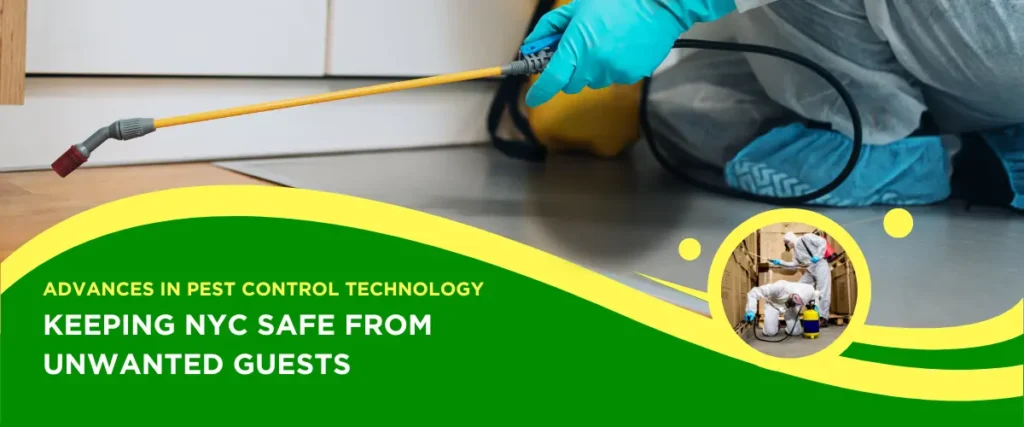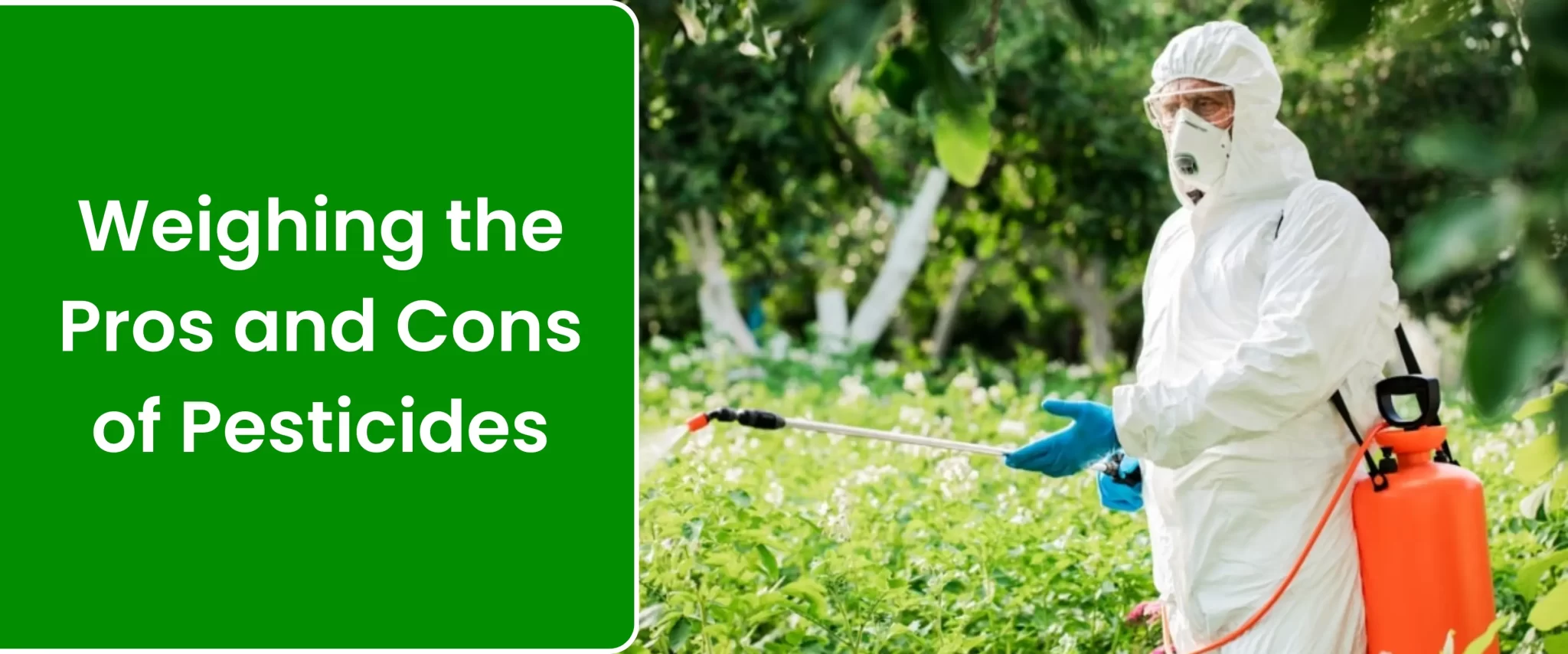
Weighing the Pros and Cons of Pesticides: A Comprehensive Guide for NYC Residents
Living in a bustling metropolis like NYC, you might not think much about the tiny critters that share our urban environment. But from pesky pigeons to persistent ant infestations, insects and other organisms can become unwelcome guests in our homes and gardens. This is where pesticides come in. However, before reaching for the nearest spray bottle, it’s crucial to understand both the benefits and drawbacks of using these chemicals.
This guide will equip you with the knowledge you need to make informed decisions about using pesticides in your NYC environment. We’ll delve into the advantages and disadvantages of these products, explore various types of pesticides, and offer insights on related topics like safe application and eco-friendly alternatives.
Understanding Pesticides
What are Pesticides?
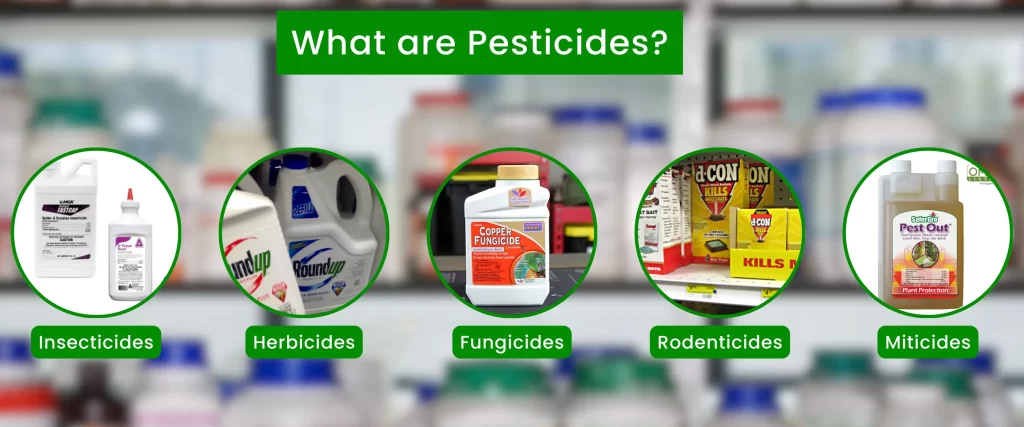
Pesticides are a broad category of chemicals designed to eliminate or control unwanted organisms. These organisms can include:
- Insects (insecticides)
- Weeds (herbicides)
- Fungus (fungicides)
- Rodents (rodenticides)
- Mites (miticides)
The primary purpose of pesticides is to protect our health, property, and valuable resources. For instance, insecticides can safeguard us from mosquito-borne diseases, while herbicides prevent weeds from competing with crops for vital nutrients.
Types of Pesticides
The world of pesticides encompasses a diverse range of products, each with its specific target and mode of action. Here’s a closer look at some common types:
Insecticides:
As the name suggests, insecticides target insects. They come in various forms, including sprays, dusts, baits, and gels.
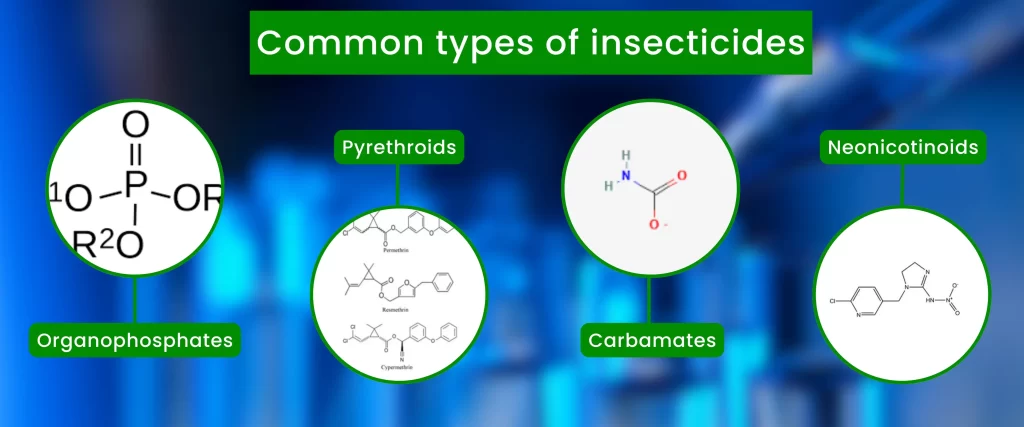
Some common types of insecticides include:
- Organophosphates: These were once widely used but are now restricted due to potential health risks.
- Pyrethroids: Synthetic versions of a naturally occurring insecticide derived from chrysanthemums. Relatively less toxic to humans than some other options.
- Carbamates: Another class of insecticides with a shorter lifespan in the environment compared to organophosphates.
- Neonicotinoids: A newer class that acts systemically within plants, meaning they are absorbed and circulate throughout the plant tissue.
The specific type of insecticide you choose will depend on the target insect, application site, and desired level of control.
Pros of Using Pesticides
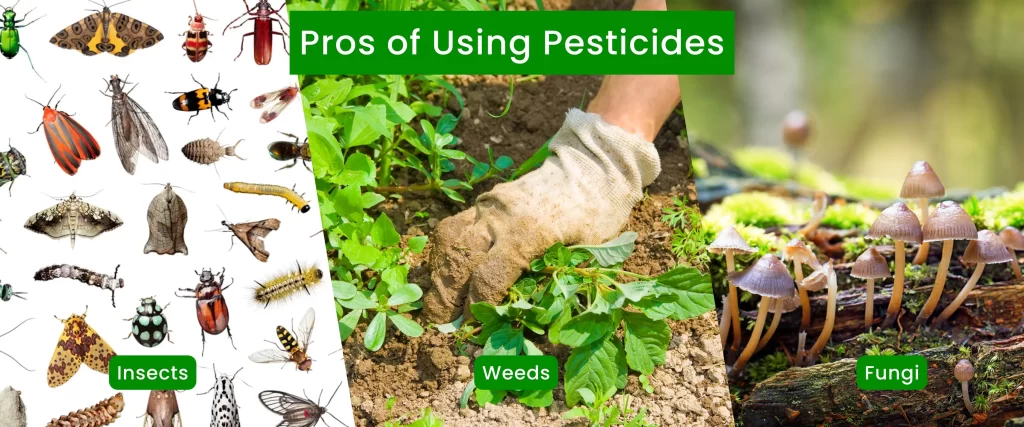
Pest Control Efficiency
Pesticides offer a powerful tool for controlling a wide range of pests that can threaten our homes, gardens, and agricultural resources. Here are some specific examples:
- Termites: These silent destroyers can wreak havoc on wooden structures. What pesticide kills termites? Is an important question to answer to protect it from destruction. Pesticides containing fipronil or hexaflumuron are commonly used for termite control due to their effectiveness in eliminating existing colonies and preventing future infestations.
- Mosquitoes: These insects not only cause itchy bites but also transmit dangerous diseases like malaria, dengue fever, and West Nile virus. Insecticides applied to breeding grounds or used as mosquito repellents can significantly reduce mosquito populations and the risk of disease transmission.
- Rodents: Rats and mice can spread diseases, contaminate food, and damage property. Rodenticides come in various forms like baits and traps, effectively controlling rodent populations and protecting public health.
Increased Agricultural Yield
Pesticides play a crucial role in modern agriculture by protecting crops from a variety of pests, including:
- Insects: Crop-destroying insects like locusts and beetles can devastate entire harvests. Insecticides help ensure healthy crop growth by preventing significant insect damage.
- Weeds: Weeds compete with crops for water, nutrients, and sunlight, reducing yields. Herbicides effectively control weed growth, allowing crops to thrive and maximize production.
- Fungi: Fungal diseases can significantly impact crop health and quality. Fungicides help prevent and control these diseases, leading to higher crop yields.
By minimizing losses due to pests, pesticides contribute to increased agricultural productivity, ensuring a stable food supply for a growing population.
Economic Benefits
The use of pesticides translates to economic benefits for both farmers and consumers:
- Farmers: Reduced crop losses due to pests lead to higher profits for farmers. This allows them to invest in better farming practices and technologies, ultimately contributing to a more sustainable agricultural sector.
- Consumers: Increased crop yields generally lead to lower food prices for consumers. Additionally, by preventing the spread of crop diseases, pesticides help maintain a stable and affordable food supply.
Disease Prevention
Pesticides play a vital role in public health by controlling pests that transmit diseases. Mosquitoes, ticks, and fleas can all carry diseases that can be debilitating or even fatal. By effectively controlling these pest populations, pesticides help prevent the spread of these diseases and protect public health.
Cons of Using Pesticides
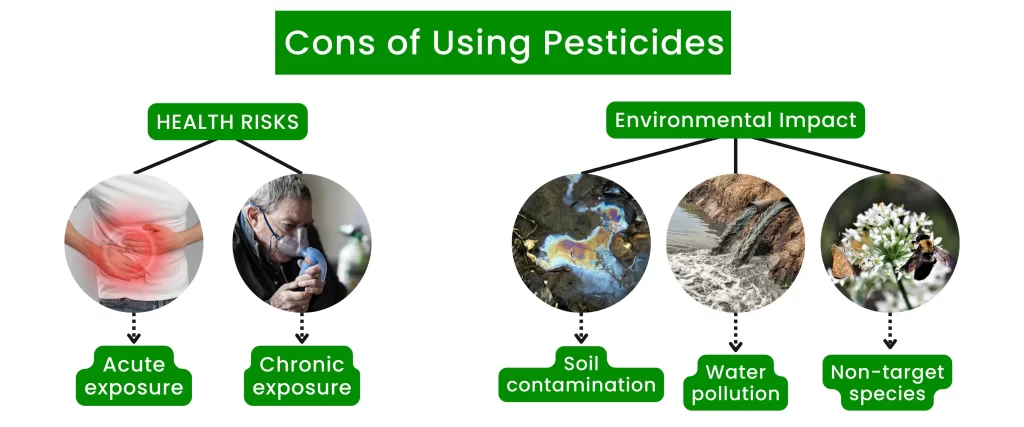
Health Risks
Despite their benefits, pesticides can pose health risks to humans if not used properly. Some potential health concerns include:
- Acute exposure: Direct contact with pesticides through inhalation, skin absorption, or ingestion can lead to immediate health problems like respiratory irritation, headaches, dizziness, and nausea.
- Chronic exposure: Long-term exposure to even low levels of pesticides has been linked to various health problems, including certain cancers, neurological disorders, and birth defects.
Environmental Impact
Pesticides can have a detrimental impact on the environment:
- Soil contamination: Pesticides can persist in the soil, harming beneficial organisms like earthworms and soil microbes that are crucial for maintaining soil health.
- Water pollution: Runoff from treated areas can contaminate water sources with pesticides, posing a threat to aquatic life and potentially impacting drinking water supplies.
- Non-target species: Pesticides can harm beneficial insects like pollinators (bees, butterflies) and predators that naturally control pest populations. This can disrupt ecosystems and lead to unintended consequences.
Pesticide Resistance
A significant concern with pesticide use is the development of resistance in pest populations. Over time, repeated exposure to the same pesticide can lead to pests evolving resistance mechanisms, rendering the pesticide ineffective. This necessitates the use of stronger or alternative pesticides, potentially increasing health and environmental risks.
Banned Pesticides List:
Due to their severe health and environmental impacts, some pesticides have been banned entirely or restricted in use. Examples include:
- DDT: This once widely used insecticide is now banned due to its persistence in the environment and its harmful effects on wildlife, particularly birds.
- Neonicotinoids: The use of certain neonicotinoids is being restricted in many countries due to their role in pollinator decline.
Safe Use and Disposal of Pesticides
Proper Usage Guidelines:
Living in a densely populated city like NYC requires extra vigilance when using pesticides. Here are some key tips for safe and responsible use:
- Read the Label Carefully: This is the golden rule! Always follow the instructions and safety precautions listed on the pesticide label. These include mixing ratios, application methods, and protective gear recommendations.
- Target Specific Pests: Identify the specific pest you’re trying to control and choose a targeted pesticide product. This minimizes the risk of harming beneficial insects or other organisms.
- Spot Treatment: Apply pesticides only to the affected areas, avoiding unnecessary broadcast application. This reduces the amount of pesticide used and potential environmental impact.
- Favor Less Toxic Options: When possible, opt for less toxic pesticides like insecticidal soaps, biological controls (beneficial insects), or mechanical traps. These options generally pose lower risks to human health and the environment.
- Weather Conditions: Don’t apply pesticides on windy days or before rain. Wind can carry the pesticide to unintended areas, while rain can cause runoff, contaminating water sources.
- Protective Gear: Wear appropriate personal protective equipment (PPE) as recommended on the label. This may include gloves, goggles, respirators, and long-sleeved clothing.
- Pet and Children Safety: Keep children and pets away from treated areas until the pesticide has dried completely. Store pesticides securely in a locked cabinet, out of reach of children and pets.
Disposal Methods:
Improper disposal of leftover pesticides and empty containers can pose a significant environmental threat. Here’s how to dispose of them responsibly:
- Use It Up: The best way to dispose of a pesticide is to use the entire product according to the label instructions.
- Check Local Regulations: Contact your local sanitation department or hazardous waste disposal facility to determine their specific guidelines for pesticide disposal. Some communities may have pesticide collection events.
- Triple Rinsing (if applicable): For certain water-soluble pesticides, a method called “triple rinsing” may be recommended. This involves rinsing the empty container three times with clean water, adding the rinsate to the spray tank mix, and disposing of the container according to local regulations.Never pour leftover pesticides down the drain, into the toilet, or onto the ground.
Can You Fertilize And Pesticide At The Same Time
Combination Use:
While it’s technically possible to use pesticides and fertilizers simultaneously, it’s generally not recommended. Here’s why:
- Fertilizers can stimulate pest growth: Lush green growth due to fertilizer application can attract more insects, potentially negating the effect of the pesticide.
- Pesticides can harm beneficial microbes: Some fertilizers contain beneficial microbes that help improve soil health. Pesticides can inadvertently harm these microbes, disrupting the natural balance in the soil.
Best Practices:
If absolutely necessary to use both pesticides and fertilizers, follow these best practices:
- Apply at Different Times: Separate the application of pesticides and fertilizers by a few days. This minimizes the interaction between the two products.
- Spot Treatment: Use targeted application methods for both pesticides and fertilizers. This reduces the amount of each product used and potential for unintended consequences.
- Consider Alternatives: Explore integrated pest management (IPM) techniques (see below) to control pests and promote healthy plant growth, minimizing the need for both pesticides and fertilizers.
Integrated Pest Management (IPM):
IPM is a comprehensive approach to pest control that emphasizes prevention and the use of non-chemical methods whenever possible. Here are some key principles of IPM:
- Monitoring: Regularly monitor your plants to identify potential pest problems early on.
- Cultural Practices: Techniques like proper watering, spacing plants appropriately, and encouraging natural predators can help create a healthy environment less susceptible to pests.
- Mechanical Controls: Physical barriers, traps, and handpicking can be effective for controlling pest populations.
- Biological Controls: Introducing beneficial insects, birds, or microbes that prey on the target pest can provide natural pest control.
- Judicious Use of Pesticides: If pesticides are necessary, IPM advocates for using them as a last resort and in a targeted manner, minimizing the overall reliance on chemical controls.
Alternatives to Chemical Pesticides
With growing concerns about the downsides of chemical pesticides, there’s a rising demand for safer and more sustainable pest control methods. Here, we explore some effective alternatives:
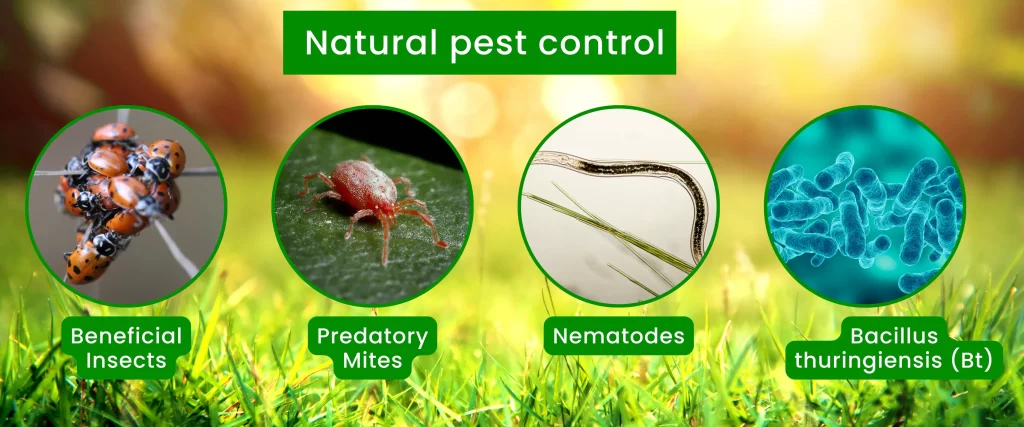
Biological Controls:
Nature provides a wealth of options for natural pest control. Here are some examples:
- Beneficial Insects: Ladybugs, lacewings, and parasitic wasps can be introduced to prey on specific pests in your garden or home.
- Predatory Mites: Tiny mites can be natural enemies of spider mites, a common garden pest.
- Nematodes: Microscopic worms can be applied to soil to target and kill specific insect larvae.
- Bacillus thuringiensis (Bt): A naturally occurring soil bacterium that can be used as a spray to control caterpillars and other moth larvae.
Cultural Practices:
Simple changes in your gardening practices can create a less hospitable environment for pests:
- Crop Rotation: Planting different crops in the same location each year disrupts pest life cycles that rely on a specific host plant.
- Companion Planting: Strategically planting certain herbs or flowers alongside your vegetables can deter pests or attract beneficial insects.
- Row Covers: Protecting young plants with physical barriers like netting can prevent insect damage.
- Proper Watering and Spacing: Healthy, well-maintained plants are naturally more resistant to pests.
Conclusion
This guide has explored the world of pesticides, highlighting both their advantages and disadvantages. Here’s a quick recap:
- Pros: Pesticides offer effective pest control, increased agricultural yields, economic benefits, and disease prevention.
- Cons: Chemical pesticides can pose health risks, harm the environment, lead to pest resistance, and have negative consequences when improperly used or disposed of.
Final Thoughts:
The decision to use pesticides requires careful consideration of the specific situation and potential risks and benefits. By staying informed about alternatives and adopting a more holistic approach to pest control, we can create a safer and more sustainable environment for ourselves and future generations.
Call to Action:
Don’t stop learning! Research available resources on integrated pest management (IPM) and explore eco-friendly alternatives before reaching for chemical pesticides. Consider the long-term impact of your choices and promote responsible pest control practices in your community. Remember, a healthy environment starts with informed decisions!

